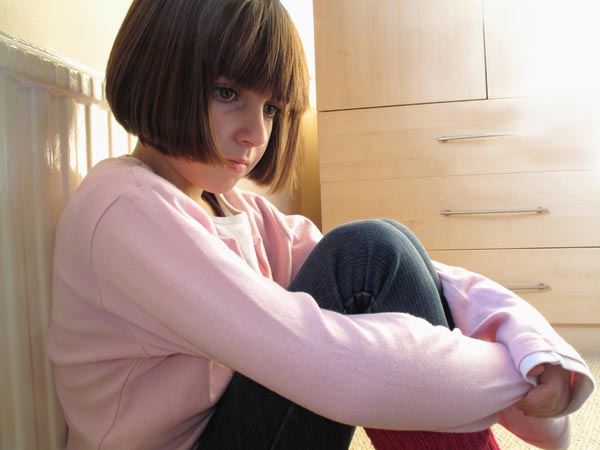11 New Warning Signs Help Spot Mental Illness in Children

To help children with undiagnosed mental disorders, researchers today (Oct. 28) issued a list of 11 easy-to-recognize warning signs for use by parents and others in the community.
Among the signs: feeling sad or withdrawn for two weeks or more may indicate depression, and intense fears or worries that get in the way of daily activities may indicate an anxiety disorder.
The list is intended to help close the gap between the number of children who suffer from mental illness and those who actually receive treatment for it.
Studies indicate that three out of four children with mental health disorders, including attention-deficit/hyperactivity disorder (ADHD ), eating disorders and bipolar disorder, go unrecognized and do not receive the care they need, the researchers say.
Parents who notice any of the signs in their child should take him or her to see a pediatrician or mental health professional for a psychiatric evaluation, the researchers said.
The researchers hope the list will help parents distinguish between normal behaviors of childhood and true signs of mental illness .
"Many people [have] been confused about whether their child has a problem," said Dr. Peter S. Jensen, a professor of psychiatry at the Mayo Clinic, who helped compile the list. "If you have a simple yes, no decision, it becomes easier," Jensen said.
Sign up for the Live Science daily newsletter now
Get the world’s most fascinating discoveries delivered straight to your inbox.
Identifying a psychiatric disorder early in life will also allow children to receive treatment sooner, which will likely make the treatments more effective, the researchers said. Some children go 10 years between the time their symptoms appear and when they receive treatment, Darcy Gruttadaro, director of the Child & Adolescent Action Center at the National Alliance on Mental Illness, said at a news conference about the warning signs.
The list is published today in the journal Pediatrics. It was spurred by a 2001 request by the U.S. surgeon general to develop a list similar to the one created in 1971 to help people recognize the early signs of cancer.
To come up with the list, the committee reviewed mental health studies involving more than 6,000 children. They made sure the symptoms on their list could identify the majority of kids with certain mental health disorders.
The 11 warnings signs are as follows:
- Feeling very sad or withdrawn for two or more weeks
- Seriously trying to harm or kill yourself, or making plans to do so
- Sudden overwhelming fear for no reason, sometimes with a racing heart or fast breathing
- Involved in multiple fights, using a weapon, or wanting badly to hurt others
- Severe, out- of-control behavior that can hurt yourself or others
- Not eating, throwing up or using laxatives to make yourself lose weight
- Intensive worries or fears that get in the way of daily activities
- Extreme difficulty in concentrating or staying still that puts you in physical danger or causes school failure
- Repeated use of drugs or alcohol
- Severe mood swings that cause problems in relationships
- Drastic changes in your behavior or personality
The signs are indented to be mental health disorder "profiles" and not specific diagnoses in and of themselves. For accurate diagnoses, parents should seek help from their health care provider, the researchers said.
To avoid potential alarm from parents and over-diagnosis of mental disorders, the researchers said they designed the list to be conservative. That is, these signs will not be evident in every child who has a mental health disorder. Of the 15 percent of youth estimated to have mental illness , the profiles will identify about 8 percent, Jensen said.
Pass it on: Eleven warning signs can be used by parents to help diagnose mental illness in their children.
- Hypersex to Hoarding: 7 New Psychological Disorders
- 10 Ways to Promote Kids' Healthy Eating Habits
- Children's Mental Health Issues are a Growing Cause of ER Visits
Follow MyHealthNewsDaily staff writer Rachael Rettner on Twitter @RachaelRettner. Find us on Facebook.

Rachael is a Live Science contributor, and was a former channel editor and senior writer for Live Science between 2010 and 2022. She has a master's degree in journalism from New York University's Science, Health and Environmental Reporting Program. She also holds a B.S. in molecular biology and an M.S. in biology from the University of California, San Diego. Her work has appeared in Scienceline, The Washington Post and Scientific American.









